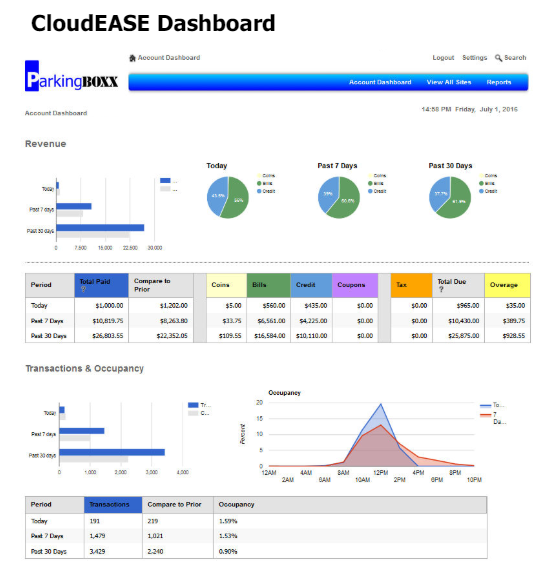
Digital Transformation of Parking Systems with Embedded Software
About the Client
Company’s Request
Technology Set
Platform: ATMEL SAM9G45 ARM9 Embedded Linux SBC | A powerful Single Board Computer (SBC) that uses an ARM9 processor, chosen for its ability to run Embedded Linux. This makes it ideal for handling complex operations, such as processing payments and sensor data. The platform supports multitasking and is highly reliable for continuous operation under various environmental conditions. |
CCNet | Used for communicating with bill validators and coin changers, for parking meters that accept cash payments. |
MDB (Multi-Drop Bus) | Utilized for managing communications between devices like card readers and payment processors for integrating various payment options. |
CCTalk | Employed for handling serial communication with coin acceptors and dispensers, providing secure and efficient payment operations. |
Sensors: Humidity, Temperature, Vibration, Light | Humidity and Temperature Sensors ensure the equipment operates reliably under different weather conditions by adjusting operations or alerting maintenance teams if the internal conditions exceed safe thresholds.
Vibration Sensors detect and report any tampering or vandalism attempts, enhancing security.
Light Sensors adjust the brightness of the display and keypad based on ambient lighting, improving usability and energy efficiency.
|
C++ and C | Used for low-level system programming, providing the performance and control needed to manage hardware devices directly. These languages are ideal for writing efficient drivers and other system-level code in embedded systems. |
MySQL | Employed for database management, storing transaction records, and parking data securely and efficiently. This allows for data analysis and reporting capabilities. |
Javascript | Utilized mainly for developing user interfaces and handling client-side interactions in web-based management tools, making the system user-friendly and accessible remotely. |
Linux-2.6 (kernel programming) | Involves customizing the Linux kernel to meet specific system requirements such as real-time data processing and enhanced security features. This customization is needed to make the operating system support all hardware components natively and run efficiently on the limited resources of an embedded system. |
To meet our client’s specialized demands, Sirin Software developed a custom Linux Board Support Package (BSP) for low-level control over embedded systems within smart parking meters. This BSP was designed on the ATMEL SAM9G45 ARM9 Embedded Linux Single Board Computer (SBC), chosen for its robust performance in handling complex computations and connectivity required for smart parking solutions.

The Linux kernel was customized to align with the unique hardware configurations of the parking meters. This customization involved modifying the kernel to support specific hardware features such as RFID readers for access control, sensors for detecting vehicle presence, and connectivity modules for internet and network communications. Kernel-level changes ensured that the operating system could efficiently manage hardware resources, optimize power consumption, and provide the necessary real-time processing capabilities.
Developing new device drivers was necessary for integrating new hardware components like payment terminals that support EMV and NFC technologies and environmental sensors for monitoring humidity and temperature. Each driver was written from scratch to reach full compatibility with the Linux kernel, allowing communication between the hardware and software systems. These drivers handle data streams from sensors and manage secure transaction processing tasks.
System Integration
The integration process involved combining the hardware and software components to create a cohesive system. This required a deep understanding of both the physical connections and the software interfaces that link various components, such as payment processors, display units, and security cameras. Middleware was developed to enable communication between these disparate systems, confirming that the system can execute complex operations like fee calculations, space management, and security monitoring without lag.

Developer Support
Supporting our client’s application developers was part of the project. This involved creating detailed documentation and APIs that allow for easy interaction with the new system architecture. The client employers were provided with tools and libraries to create applications that could leverage the full capabilities of the hardware, such as dynamic pricing adjustments and real-time space availability updates.

Early in the development phase, we encountered significant challenges with hardware-software compatibility, particularly with the integration of third-party payment terminals into our customized Linux environment. To address this, our team revised the kernel configuration to include additional support for the specific communication protocols used by these terminals. Furthermore, we developed a series of stress tests to ensure that transactions could be processed reliably under various network and usage conditions.
Another challenge was the need for real-time processing of high volumes of sensor data to accurately detect vehicle presence and manage parking space availability. We enhanced the kernel’s real-time capabilities by optimizing scheduler algorithms and incorporating real-time patches.
This allowed for faster processing of sensor data, reducing latency and greatly improving the responsiveness of the system.
Value Delivered


